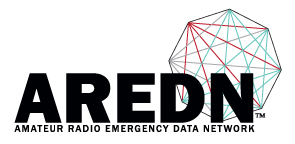Ok, here's a weird one for you (or maybe not).
I can not get a stable 2.4GHz or 900MHz link to the MESH in my area - we've tried everything. However, I just came back from a DXPedition with 2 x Micrktik RB411s with Xaygl 70cm WiFi modules in them. I am certain that I can get a link to the remote site via UHF, but I'm unsure how to configure this, and how to setup the AREDN nodes at either end of the bridge to see across the bridge. I've dumped the Mikrotik O/S iin favour of OpenWRT Barrier Breaker. All I want to use the Mikrotiks for is to build a UHF backbone to get me to the MESH.
Has this been done before?
Thanks! VA3QR.
I can not get a stable 2.4GHz or 900MHz link to the MESH in my area - we've tried everything. However, I just came back from a DXPedition with 2 x Micrktik RB411s with Xaygl 70cm WiFi modules in them. I am certain that I can get a link to the remote site via UHF, but I'm unsure how to configure this, and how to setup the AREDN nodes at either end of the bridge to see across the bridge. I've dumped the Mikrotik O/S iin favour of OpenWRT Barrier Breaker. All I want to use the Mikrotiks for is to build a UHF backbone to get me to the MESH.
Has this been done before?
Thanks! VA3QR.


Perhaps however using them as transparent bridges, plug them into a mesh node somewhere and bring the LAN out via them so you can access from your home PC on 70cm to the LAN port of a remote mesh note which then links into the network.
I've seen this done with a 1.2Ghz DSTAR radio before, but even that was a bit painful at 128kb/s vs mesh direct but proved it could be done.
You wouldn't want to try and bring the DTDLink across as its not tolerant to packet loss and would very quickly eat up any 70cm bandwidth, in addition it would register as a "perfect" link potentially pulling traffic off 100mbps links to a painful 70cm link.
I have played with these cards using openwrt. If you need help configureing openwrt send me your email addressBrad
I have done some experimenting with both the Doodle labs cards (no longer made) and Xagyl cards. My plan was to use them as a tree-penetrating last-mile link. You run these at 5 MHz bandwidth (SISO of course) and probably at less than max encoding, so the throughput is not that great. But it is just enough to stream SD video (in one hop). The main problem I ran into is that the Xagyl card has its maximum sensitivity around 443 MHz right where US repeaters are located, rather than down at 425 MHz where broadband/ATV activity is located. I found that a carrier signal of -70 dBm (at 443 MHz) is enough to cause the reported noise floor to rise (and OFDM signal to drop). Around here, if you poke an antenna up in the air, there will be plenty of signals that strong, in that frequency range. When the card gets hit with a signal stronger than -70 it tends to drop the link until about 1 minute after the problem signal goes away. None-the-less, I was able to test a 6 mile hilltop-to ground level link with only occasional drop-outs (using Doodle Labs). My plan is to use 10 MHz BW helical resonator filters on each end to deal with this but I have been busy with other things recently ...
The filters I am using are from ocicom.com - these are not cheap but about half the cost of the dci.ca filters. OCI will tune the filter to any center frequency you need. A 10 MHz filter allows a 5 MHz central region with reasonable group phase delay characteristics.
I don't think 9.5dBi gain is sufficient to maintain a good link at that distance regardless of the trees. We have some local-loco folks attempted to use NanoStation loco 2.4GHz devices. These have a gain of 8dBi and advertised by Ubiquiti for 5+ miles. They had completely clear line of sight to a mountain spot and not a usable link.
Joe AE6XE
If you do this DtDlink mode over an RF bridge, there is a setting to make OLSR more stable to set. This is something we're looking at putting in the next release as an option.
Joe AE6XE
What OLSR settings should I be changing? Thanks!
Edit these 2 files and reboot:
/etc/config/olsrd
/etc/config.mesh/olsrd
Comment out "#" this line:
config Interface
list interface 'dtdlink'
# option Mode 'ether'
What throughput and link rate do you get on 70cm, particularly at 20+ km? (KE2N, did you do any iperf measures with your teseing?) Given people transmitting a lot of high power signals in UHF lower freq band, I'd be interested in your results. I see that the devices you are using are also Atheros based and doing 802.11g protocols. A couple 5Ghz Nanobridges go on ebay for about $50 per unit and you'd get 35+Mbps links at that distance to compare with.
Joe AE6XE
At 5MHz b/w, it probably maxes out at 18Mbps. I'll let you know what we find when we get it all mounted.
Out of curiosity, do I make that OLSR config change on the AREDN units on both ends of the bridge?
Thanks for the help!
The OLSR setting is on both ends, each node makes independent decisions to route and determine link up/down thresholds. I should add that one would never want to use this setting on a cat5 or normal DtDLink usage. So don't forget to undo it if repurposing the node back. Press the rest button for 15 seconds to move the firmware back to firstboot if any doubt.
Joe AE6XE
After a FULL power up... Press the reset button for 15 seconds to move the firmware back to firstboot, if any doubt.
Will keep you posted!
not sure what level of activity you guys have up there, but 432.1 the weak-signal calling frequency on 70 cm. With a 432.5 center frequency you are going to put a whole lot of OFDM modulated carriers all around, and on top of, the calling frequency. It may take a while for your ham neighbors to find you - but you might expect to see people with torches and pitchforks showing up in your front yard one evening ,,,
Being a VHF/UHF contester with a fair bit of experience in that part of the 70 cm band, the weak signal guys are listening in the -120 dB range and below. Your radio will require a signal several hundred times greater to successfully decode OFDM.
I'd ask that, if pursue that segment of the band, you not use the AREDN project name in the context of this experiment... or I'll likely have my contest friends visiting me with torches and pitchforks ;-)
Andre, K6AH
The guys in Niagara (who are linked to the Peel MESH) are all running on 70cm without anyone breaking down doors :)
Ok, configs modified (after I found an Atheros IPK for nano editor - i hate vi). Should have some results later this week. Stay tuned!
73, Rich W6ABJ